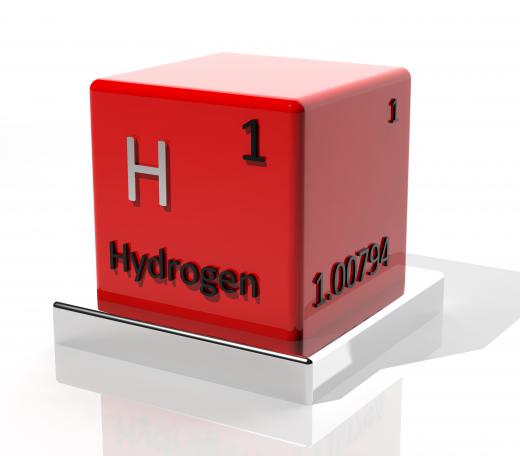What Is Hydrogen Cyanide?
Hydrogen cyanide is a chemical formed from hydrogen, carbon and nitrogen. Its chemical formula is HCN. Chemicals used in mining and other industrial processes use hydrogen cyanide as a precursor, while the compound itself is used for fumigation. The best-known use of hydrogen cyanide is as a poison; commonly known simply as "cyanide," it is highly poisonous in either gaseous or liquid form, causing rapid death by inhibiting cellular respiration.
Chemist Carl Scheel isolated hydrogen cyanide in 1782 while studying the blue dye known in the English-speaking world as Prussian Blue. He named the compound he had discovered "Berlin Blausaure" or "Berlin Blue acid" after the German name for the blue dye. The fact that it had been isolated from Prussian Blue led to the compound being known as "Prussic acid" in English.

Hydrogen cyanide is highly poisonous, and can kill in even small concentrations. Inhalation of cyanide gas can lead to death within ten minutes. The poison inhibits an enzyme called cytochrome c oxidase, preventing cells from gaining energy. A number of groups have deployed this poison as a weapon, either in gas or liquid form. For example, the Nazi regime used Zyklon B, a pesticide containing cyanide gas, to kill prisoners in extermination camps, while over 900 followers of cult leader Jim Jones used liquid cyanide to commit suicide in Guyana in 1978.

Hydrogen cyanide is a colorless liquid which gives off a characteristic odor similar to bitter almonds. Only some humans are able to identify this odor; the gene for the ability to detect it is absent in approximately 20 to 40 percent of the population. The chemical is present in small quantities in a number of plants, particularly fruit with stones such as peaches and cherries as well as in the roots of the cassava plant. Long-term exposure to small amounts of cyanide can lead to persistent health problems; scientists have observed these effects in people whose diet contains a high amount of cassava.

Hydrogen cyanide is a commonly-used poison in murder mystery fiction, playing an important role in the work of authors such as Agatha Christie and Raymond Chandler. Murder using cyanide is rarer in reality, but there are a number of known examples. For instance, hydrogen cyanide may have been one of the weapons used against charismatic Russian faith healer Grigori Rasputin. A related compound, potassium cyanide, was used to poison medication in the 1982 Chicago Tylenol murders.
AS FEATURED ON:
AS FEATURED ON:
















Discussion Comments
@anon218609-- It's actually not found in cigarettes, but in cigarette smoke. The chemicals found in cigarettes produce cyanide.
This is one of many reasons why I wish smoking could just be banned. I don't smoke but people around me do. I'm tired of inhaling second-hand smoke. I can't tolerate it at all, I feel like I'm being poisoned. I've asked my neighbors if they could smoke inside instead of their balcony because the smoke enters through my windows. But they don't care. They're happy poisoning themselves and me.
Do you know what kind of damage the cyanide in cigarette smoke is capable of?
@donasmrs-- Cyanide can cause headaches, vomiting and fainting because red blood cells cannot take in oxygen. Someone who has died from cyanide poisoning has pinkish skin.
If you've read murder mysteries, I'm sure you also know that cyanide gives off an almond-like scent. That's how most fiction writers hint at a possible cyanide poisoning in their work, by mentioning the almond scent. But the funny thing is that not everyone can smell it. It takes a certain gene to be able to pick up the almond scent of cyanide.
I write short fiction and I have a character who dies from cyanide poisoning. But how can I describe his death? What sort of things happen to someone who has cyanide poisoning?
It found in cigarettes.
Post your comments